Acer's Iconia W700 Ivy Bridge Windows 8 Tablet: The Start of Something Big
by Anand Lal Shimpi on June 9, 2012 12:45 PM EST- Posted in
- Trade Shows
- Acer
- Intel
- Mobile
- Windows 8
- Tablets
- Computex 2012
My first meeting of Computex wasn't a meeting at all, rather it was Acer's press conference a day before the show officially started. In its press conference, Acer introduced a top to bottom lineup of touch enabled Windows 8 devices.

Among the list were two particularly interesting tablets: the Iconia W510 and W700. The former is an Atom (Clovertrail) based tablet with Transformer-style keyboard dock, while the latter is a full fledged Ivy Bridge based tablet. On my last day in Taipei I managed to secure some extended hands on time with the W700. I'm always asked what I was most impressed by at any trade show, and I'd have to say for this Computex it was definitely Acer's W700. It's not just a good device, but it's also the start of something very big.
At first glance Acer's entire Windows 8 lineup looks significantly improved from the company we knew just a few months ago. There's a lot more attention paid to styling, ergonomics and the user experience of these new Windows 8 devices. For example, where we could once complain about subpar displays, the W700 puts an end to that with its 11.6-inch 1080p IPS panel.
The W700's build quality is excellent, however the handful of devices that exist in the world today were all hand built. I was surprised to find fairly polished Windows 8 tablets at Computex, and it turns out I was right to be surprised. Everyone worked overtime to get devices ready by Computex, in most cases resorting hand building prototypes to the tune of $10K a piece. What we saw at the show is by no means ready for retail. You can expect the final materials list, thickness and weight to improve by the time it launches. And yes, the W700 will be a launch vehicle for Windows 8.
Performance: Much Better than an ARM Tablet
It's no surprise that Acer was able to pull the W700 off, word has it that Intel itself offered a lot of help with the design and optimization of the W700. It's not uncommon for Intel to help its partners. In the past it has done so for Apple. In this case Intel has a vested interest in making sure that more than just Apple are able to produce compelling products in the market. Apple's Tim Cook understands the supply chain very well. As Intel is one of the largest if not the largest consumer of cost in Apple's Mac bill of materials, it runs the risk of facing cost "optimization". Intel's aid to Acer can be viewed as diversifying its portfolio if you will.
The W700 is understandably fast. Intel isn't talking about CPU specifics, likely because the final configuration isn't decided yet. There's clearly an ultra-low voltage Ivy Bridge inside but I suspect this is more than just another Ultrabook chip. For the launch of the original MacBook Air Intel introduced a small form factor package and specially binned low-power CPU/chipset combination to meet Apple's design requirements. I bet Intel has done something similar here for Acer (maybe not on the packaging side, but definitely when it comes to silicon).
Even running a well underclocked Ivy Bridge it's far smoother and more capable than any ARM or Atom based tablet. As Metro is designed to be responsive on much slower hardware, it simply flies on Ivy. There are still a number of rough edges that Microsoft needs to work on. The Windows 8 release preview isn't as polished and consistently smooth as iOS is, but I suppose that's why it's a release preview and not a final build of the OS. As long as Microsoft focuses on delivering consistent UI behavior (not just frame rate) across the board I see no reason Windows 8 can't do exactly what iOS has done.
The CPU is actively cooled, but in my use of the device I couldn't hear the fans nor did the tablet ever get uncomfortably warm. Admittedly I didn't try editing anything in Photoshop or run Cinebench on the machine.
Wireless and Ultra Fast Storage
Connectivity is very well done on the W700. While Acer isn't talking about wireless options, there's a plastic strip across the aluminum back that could be home to more than just WiFi antennas. If Acer wants to charge a premium for the W700, it needs to be able to offer LTE and GPS similar to the higher priced iPads.
Thanks to Ivy's 7-series chipset there's a single USB 3.0 port on the tablet itself. Acer isn't talking about what specific storage is used inside, but storage performance should be significantly better than what you're used to from a conventional ARM based tablet with a single piece of NAND. Intel copied a bunch of 36MP images from a Nikon D800 over USB 3.0 to the W700's internal storage. Not only did the transfer go extremely quickly (think notebook quick, not tablet quick), but flipping through the 36MP JPEGs was as fast as you'd expect from a desktop. Occasionally the system would take a second or so before the displayed image became sharp, but that only happened when flipping through a folder of images very quickly. The W700 is basically a laptop without the keyboard - you can expect it to have laptop hardware inside.
The W700 doesn't have the optional keyboard dock of the W510, likely because it would be too top heavy. Acer does make a presentation dock that you can use with a wireless keyboard. Either Acer or third party manufacturers could build a case with integrated keyboard similar to what exists for the iPad today.
Here's where things get exciting. The Iconia W700 has a Thunderbolt port. It could theoretically serve as a tablet, that's also a notebook that's also your desktop. Local storage will be limited to whatever is inside the chassis, but you could easily have an external disk array giving you terabytes of high-speed local storage when in desktop mode. Remember the old holy grail that we once believed we had to rely on the cloud for: all your content, any time, any where. With the W700 as your tablet, notebook and desktop, by default you get almost all of that without ever relying on a wireless connection.
You could even theoretically have an external discrete GPU connected via Thunderbolt using something like MSI's GUS chassis. While I seriously doubt we'll see this in time for launch (or during the W700's lifespan), it is possible to experiment with docks that would enhance cooling, allowing Ivy Bridge's configurable TDP to go to work.
Final Words
The W700 is admittedly thicker than I'd like. It's comfortable to hold but you can't one-hand it for long and it's best used when propped up against something like your leg or the edge of a table. Haswell should help thin things out - and 14nm Broadwell will put the issue to rest entirely. Even with just Ivy Bridge however, the W700 is the beginning of something special. An ultra portable device that can truly serve as everything from a tablet to your desktop. I don't know that the W700 is an iPad competitor, but it will offer an option for those users who want to consolidate their devices.
Pricing is unknown, however Acer and Intel are currently working on optimizing the design to make it price competitive with the higher end iPad configurations. The slide above has the W700 starting somewhere around $799 and going up to $999. The latter I believe is too high. If Acer can deliver the W700 with LTE, Thunderbolt and a a 64GB SSD for $799 I think it's an easy recommendation.
The onus is on Microsoft to quickly enable compelling Metro applications. At the introduction of the new iPad with iPhoto, Apple talked about the tablet being a great tool for photographers to quickly preview and do minor edits on photos while on location. The W700 and similar tablets running Windows 8 could be that and more, but Microsoft needs the right applications to take advantage of it. The amount of marketing muscle Microsoft is putting behind Windows 8 and Metro apps, combined with the sheer power of tablets like the W700 gives me hope that app developers will quickly flock to the platform to really take advantage of it.
The world is changing and for the first time in years, Microsoft and Intel appear to be the ones leading that change.


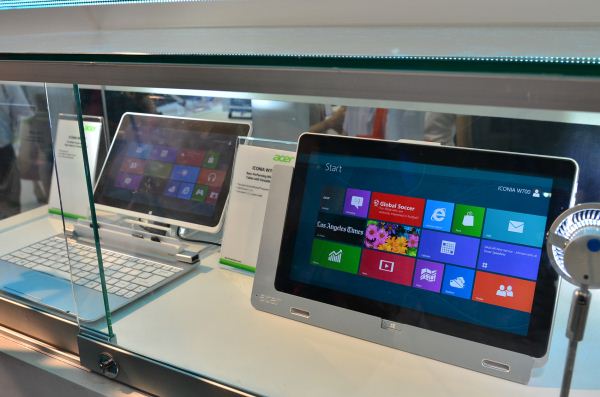






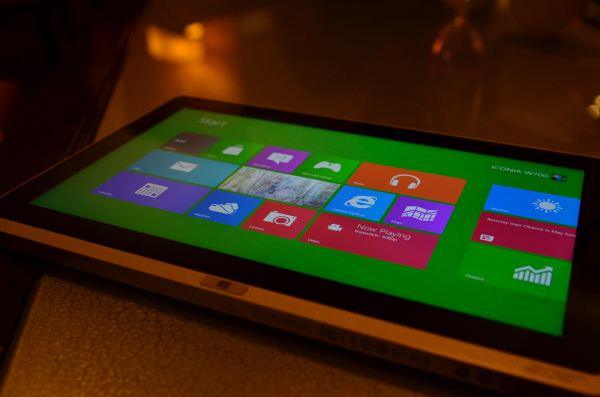

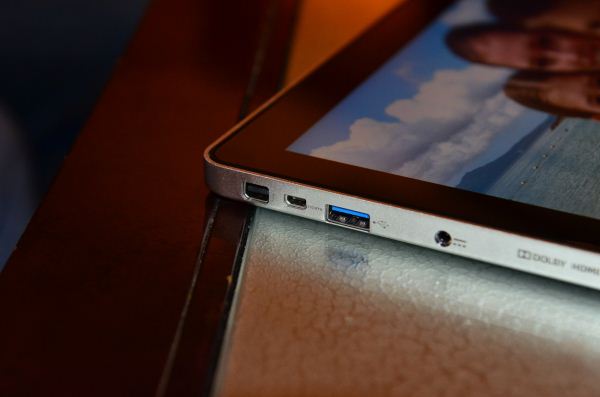
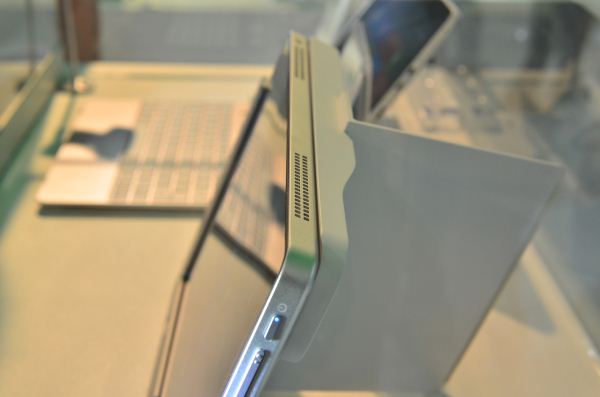
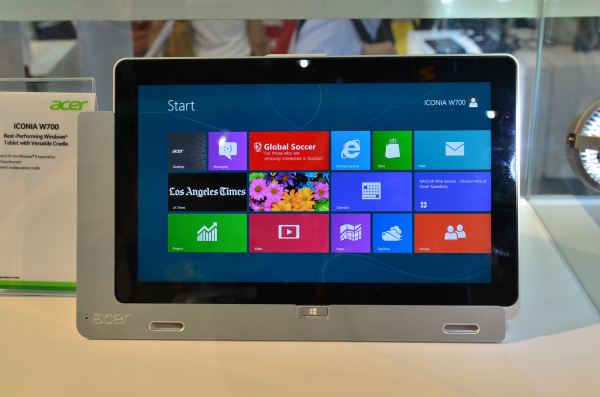








141 Comments
View All Comments
ssj4Gogeta - Sunday, June 10, 2012 - link
They also don't understand that a single-core Ivy Bridge (if such a thing existed) would still run circles around any current ARM architecture. Quad-core or not.Olimars - Sunday, June 10, 2012 - link
Shadowgun??? You have very low aspirations. Think more like Skyrim. On a tablet.jwcalla - Saturday, June 9, 2012 - link
The problem with these hybrid devices is that there's too much bulk to be a good tablet, and too much leanness to be a good laptop. In trying to make compromises it does both functions poorly, and so will probably only appeal to a very small group of people. Especially considering the price.JMO of course.
UpSpin - Saturday, June 9, 2012 - link
such a hybrid device is as tablet as slim as a tablet, as notebook as thick as a ultrabook.A pure slate tablet, especially at such a high price appeals only a very small group, you can't replace a Laptop with a slate. You need a keyboard, so a transformer like Hybrid allows people to use the device as tablet and laptop without bulk.
The ideal scenario: In the train you have a tablet to surf the web, take notes with the pen, ..., at the cafe you transform it to a notebook with the keyboard dock to write an essay or mails, at home you plug it in the Thunderbolt Docking station, which connects the tablet to your 24" display, USB devices and external GPU and storage and do the intensive workloads.
Conficio - Saturday, June 9, 2012 - link
Make that: At home you plug it in the Thunderbolt *Work* station, which connects to the tablet and lets you access seamlessly its content while using its local resources.
That is the only use case I can see for PCs with Thunderbold (justifying its hight price). Have the desktop PC connect to a laptop/tablet and see it as a storage device where you can access the data/documents. The OS that can make the content from both available on both, as if it would be in the coud, will be a break through.
JimmiG - Sunday, June 10, 2012 - link
How many people actually sit around at cafés to write essays, though? Cafés are crowded, noisy and they don't like you sitting around for hours without buying anything. The only ones who ever seem to do that are tech website editors, who do it just to prove a point.I would say most people spend the majority of their time at work and at home, possibly with a semi-lengthy commute in between.
-At home, I use my desktop computer. It's more powerful and ergonomic than a laptop.
-At work, I use a laptop, but 99% of the time it sits in its dock with 3 monitors and a proper mouse and keyboard. 1% of the time I take it to another part of the office for a meeting or similar.
-When using public transport, a smart phone is fine. With a tablet, it feels like everyone can see what you're doing on the screen, and it's too bulky for the narrow seats and crowded spaces of buses and trains. A smart phone can be held discretely in one hand without annoying your seat neighbor.
-On the rare occasions when I actually go to a café, I don't want to be carrying around a bag with a slate, dock, keyboard etc. Then I might as well take a laptop with me.
If I want to check facebook, text someone or quickly check something on the web, a smart phone is fine, and it fits in your jeans pocket.
UpSpin - Sunday, June 10, 2012 - link
You don't seem to understand: the cafe was an example. My own usage scenario with such a device would look like (currently owning a smartphone, tablet PC (Win 7), desktop PC, so I have a usage of all three devices)- Got woke up by the smartphone, use the desktop dock to check mails, news, ...
- In the car use the smartphone to navigate, ...
- In the train use the smartphone to surf, chat, talk, ...
- In the train use the tablet to draw stuff, annotate documents, read papers, learn stuff
- At the university use the tablet as worksheet display
- At the university use the keyboard dock to type reports in LaTeX, write mails in Outlook, use a virtual PC to run Linux and code in C simulations, ...
- At the university use the keyboard dock to connect it to a projector to present Latex/Powerpoint presentations, science stuff, ..
- In the car/train home, see above
- At home use the Desktop dock to do more demanding tasks, use a more comfortable mouse/keyboard. Play some games
- In front of the TV use the tablet and do some other stuff while watching TV
- In the bed use the tablet to read something, check mails last time
So really, I only need one powerful Smartphone and one powerful Tablet with a keyboard and desktop dock.
lilmoe - Saturday, June 9, 2012 - link
these are "hand made, pre-production models"... none of these are available in stores yet. hold that thought till the Windows8 launch, then try again.B3an - Saturday, June 9, 2012 - link
This thing is quite epic. If it has atleast 7 hours battery life and they can get the final design a little thinner, then i'll be getting one (unless another company has something even better).Anand, please cover these new Win 8 devices as much as possible. This is the future.
gorash - Saturday, June 9, 2012 - link
No way that it can get 7 hours.